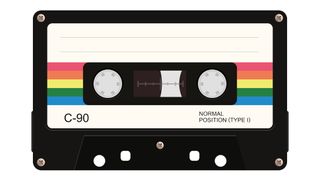
You may suppose we have got the mixtape’s eye-catching cameo in Guardians of Galaxy to thank for the return of the cassette to public consciousness, however in reality, it by no means actually left.
In response to Google Trends data, the common-or-garden tape has by no means stopped capturing the imagination; search site visitors has been steady for the last decade, even choosing up barely over the previous few years.
The audiotape (the one we know best) is analogue in nature and housed in a compact sturdy plastic case, with a tiny plastic window with two reels. Out there in capacities starting from 30 minutes to 180 minutes, it was low-cost and extensively obtainable.
The arrival of compact discs, MP3, and streaming media made the tape a classic collectible, however it survived and thrived elsewhere in a different guise: as a tape media.
As expertise improved, tape turned out to be an important a part of cloud computing, transitioning seamlessly into the digital world, regardless of its magnetic nature.
In response to the LTO consortium, the group that promotes the world’s main tape storage expertise, 46 exabytes of native capability tape storage was shipped in 2019, suggested the expertise is alive and kicking.
We approached Fujifilm to ask them what a 2020 version of the venerable cassette tape would appear like.
Audio tape in 2020
The Japanese firm was on the forefront of blank tapes for video and audio and, along with different Nippon firms (Imation, TDK, Maxell and Sony), formed the part of the LTO with an AV tape legacy.
The most capacious tape technology in the marketplace is LTO-8. It delivers a staggering 12TB of storage on a reel of tape that’s 960m long and 12.65mm extensive (or 12.14 sqm). In different phrases, the storage density of LTO-8 is slightly below 1TB per square meter (0.988TB, to be precise).
C90 tape was the most common massive capability audio tape of its period, with longer variations (C120, C150 and C180) proving unreliable. At 135m and with a width of solely 3.8mm, it gives a significantly smaller floor space – around half an sq. meter.
Utilizing the identical storage density, one can calculate {that a} C90 tape would maintain about 506GB of data, or about 100,000 music tracks compressed in MP3.
Provided that an LTO tape, with an extra sturdy set of features, prices about $20 (albeit the older technology), one may envision {that a} souped-up 21st-century tape that performs digital audio solely would price a bit much less.
Nonetheless, overlook about backwards compatibility; even a bodily similar reproduction wouldn’t work in 1980s-style cassette gamers or boomboxes.
Further, regardless of the nostalgia enchantment, there are a variety of different hindrances that mix to make the revival of brown ribbon unlikely.
Poor battery life, the absence of a shuffle mode (remember, tape is linear), restricted resistance to tear, put on, shocks and excessive temperature, and the availability of cheap alternatives all stand in the way.